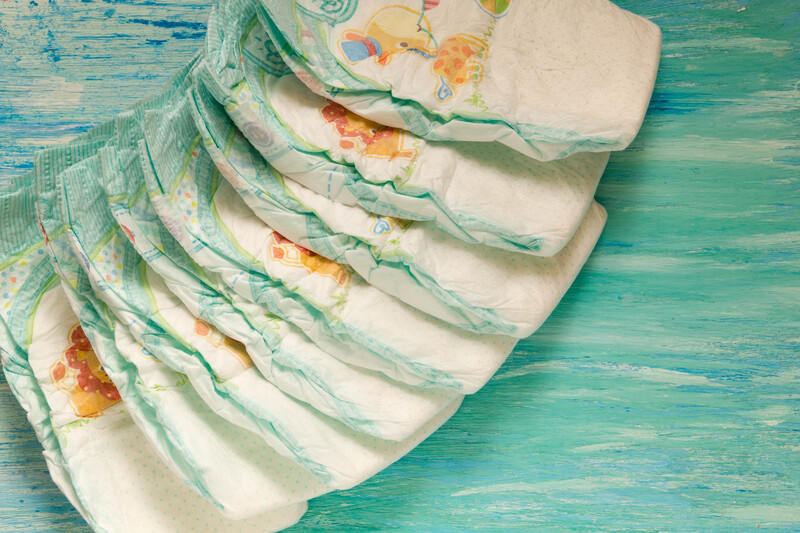How to Keep Communities Safe With Correct PPE Waste Disposal
The global health crisis brought on by COVID-19 and other contagious diseases has made the use of Personal Protective Equipment (PPE) a household norm. While PPE plays a vital role in protecting individuals and communities, improper disposal of these safety items poses new risks to public health and the environment. Correct PPE waste disposal is essential for safeguarding communities and mitigating the spread of infections. This comprehensive guide explains why proper disposal of PPE is critical, practical methods for handling PPE waste, and steps everybody can take to ensure safer neighborhoods.
Understanding the Importance of Proper PPE Waste Disposal
PPE such as face masks, gloves, gowns, and face shields have drastically reduced infection rates. However, the exponential surge in their use has also led to a parallel increase in PPE waste. Without proper disposal, used PPE can become a vector for disease transmission and environmental degradation.
- Health Hazards: Discarded PPE can carry infectious agents, risking exposure to sanitation workers, community members, and wildlife.
- Environmental Damage: Most PPE is made of non-biodegradable materials like plastics, which contribute to land and water pollution.
- Litter and Visual Pollution: Used masks and gloves littered in public spaces tarnish the environment and erode community trust.
For these reasons, correct PPE waste disposal is not only a personal responsibility but a community-wide imperative for promoting safety and sustainability.

Risks Associated with Improper PPE Waste Disposal
Disposing of PPE incorrectly can lead to a series of negative outcomes. Let's examine the multiple risks communities face when PPE waste is not handled properly:
1. Increased Infection and Disease Spread
Pathogens lingering on used PPE can infect others who come in contact with it, whether humans or animals. This is particularly dangerous for frontline workers and public sanitation employees.
2. Environmental Contamination
Single-use PPE, especially those made from polypropylene, can persist in the environment for hundreds of years. They break into microplastics, contaminating soil, rivers, and oceans, and entering food chains.
3. Harm to Wildlife
Animals may mistakenly ingest or become entangled in discarded masks and gloves, resulting in injury or death.
4. Economic Strain
Increased litter handling and environmental clean-up put additional financial pressure on local governments and communities.
Key Principles of Correct PPE Waste Disposal
- Segregation at Source: Used PPE should be kept separate from general waste to reduce the risk of contamination.
- Proper Containment: Waste bins with lids, lined with plastic bags, should be used for PPE waste. These help keep workers and scavengers safe.
- Safe Transportation: Bins or bags containing PPE waste must be securely fastened and labeled for hazardous waste before being picked up by waste management services.
- Education and Awareness: Community members, including children, should be informed about the dangers of improper disposal and the correct practices.
Practical Steps for Community Members
How can individuals and families do their part in correct PPE waste disposal, thereby keeping communities safer?
1. Use PPE Responsibly
- Only use single-use PPE when absolutely necessary.
- Consider reusable masks where possible, and wash them frequently.
2. Segregate Used PPE
- Set aside a dedicated, lined trash bin or bag for disposal of face masks, gloves, tissues, and wipes.
- Do not mix PPE waste with recyclables or organic waste.
3. Prepare PPE Waste for Collection
- Double-bag PPE waste to prevent leaks and secure tightly.
- Label the waste bag as 'PPE waste' or 'hazardous' if recommended by your local authority.
4. Keep Waste Bins Clean
- Disinfect hands after touching PPE or waste bins.
- Regularly clean and sanitize the waste bin's exterior.
Businesses and Institutions: Ensuring Safe PPE Waste Disposal
Workplaces, schools, and healthcare facilities generate significant quantities of PPE waste. Their role in correct PPE waste disposal is even more critical.
Develop Clear PPE Waste Management Policies
- Create and enforce written protocols for PPE disposal in accordance with local health regulations.
- Train employees and cleaning staff on the importance and procedure for safe PPE waste handling.
Install Suitable Waste Disposal Infrastructure
- Provide marked, foot-operated waste bins in high-traffic areas.
- Ensure bins are emptied frequently by personnel equipped with their own PPE.
Collaborate with Certified Waste Management Services
- Outsource PPE waste collection to licensed hazardous waste management companies whenever possible.
- Ensure all PPE waste undergoes proper treatment (such as incineration or autoclaving) prior to disposal.
Monitor and Review Waste Disposal Practices
- Conduct regular audits and make improvements where necessary.
- Encourage feedback and prompt reporting of any issues.
Understanding Local Regulations and Guidance
Each community or city may have specific guidance for infectious waste disposal. Always refer to instructions from your municipal waste department, health authority, or EPA-equivalent.
- Some cities provide special bags or collection days for PPE waste.
- Certain bins may only be for medical waste.
- There may be legal consequences for improper disposal.
Keeping up to date with local PPE waste regulations protects not only yourself but all who live, work, and play in your community.
Innovative Solutions for PPE Waste Management
The surge in PPE waste requires creative and sustainable solutions. Here are innovative strategies being adopted globally to make PPE waste management more effective:
- PPE Recycling: Some companies have developed processes to recycle disposable masks and gloves into construction materials or new products.
- Biodegradable PPE: Research is underway into developing effective, fully compostable PPE alternatives.
- Community Collection Points: Designated public drop-offs for PPE waste help centralize and streamline safe disposal.
- Awareness Campaigns: Educational campaigns combat stigma and misinformation while teaching best practices.
Environmental Benefits of Safe PPE Waste Disposal
When PPE waste is disposed of correctly, it dramatically reduces environmental pollution, protects wildlife, and limits the generation of microplastics that can persist in natural ecosystems for centuries. Responsible disposal also helps conserve resources by diverting non-contaminated PPE for recycling and clean energy initiatives.
Case Studies: Community Success in PPE Waste Management
1. Local Municipalities Implement Designated PPE Bins
Cities worldwide have rolled out easily identifiable bins exclusively for PPE waste in public areas, transit stations, and hospitals, ensuring safer handling and reducing street litter.
2. Private Sector Collaboration
Retailers, transport providers, and large employers often partner with waste companies to deploy collection points and sponsor recycling programs for used PPE.
3. Schools Educating Students on PPE Waste
Through lessons, posters, and in-house campaigns, schools are preparing the next generation to be responsible consumers and environmentally aware citizens.
Common Mistakes to Avoid in PPE Waste Disposal
- Flushing masks or gloves down toilets: This causes plumbing blockages and pollutes water systems.
- Throwing contaminated PPE into recycling: PPE cannot be recycled with regular materials and contaminates the recycling stream.
- Littering in public spaces: Always use designated waste bins.
- Failing to double-bag if PPE is contaminated: Double-bagging adds an important containment barrier.
How Individuals Can Help Promote Correct PPE Waste Disposal in Their Community
Whether you live in a large city or a small town, you can play a role in promoting community safety through proper PPE waste disposal:
- Lead by Example: Practice what you preach and encourage others to adopt safe disposal habits.
- Support Local Initiatives: Volunteer for PPE waste clean-up drives or educational events.
- Advocate for Better Policies: Petition local authorities for better disposal infrastructure or hazardous waste pick-up.
- Use Social Media: Share tips and information about PPE waste management within your networks.

Conclusion: Correct PPE Waste Disposal Keeps Us All Safe
Keeping communities safe with correct PPE waste disposal is a shared responsibility that benefits everyone's health and the planet's future. By understanding the risks of improper disposal and following best practices at home, work, and in public spaces, we can reduce the spread of infections, protect our environment, and foster a sense of collective responsibility. Let's make correct PPE waste management a community priority - because safety starts with each of us.
Frequently Asked Questions About PPE Waste Disposal
Can I throw PPE in household trash?
In most cases, yes, but always segregate and double-bag them. Avoid putting PPE in recycling bins.
Are there penalties for improper PPE disposal?
Many municipalities have fines or other penalties for hazardous waste violations. Check your local regulations.
Can PPE be recycled?
Most common PPE items are not recyclable in curbside programs, but specialized recycling programs may accept certain items.
How can I get involved in community PPE waste management?
Reach out to your local council or environmental organizations to learn about volunteer opportunities or ways to advocate for better waste management policies.
By following safe, correct PPE waste disposal practices, each of us can make a real difference in keeping our communities healthy and clean for generations to come.
